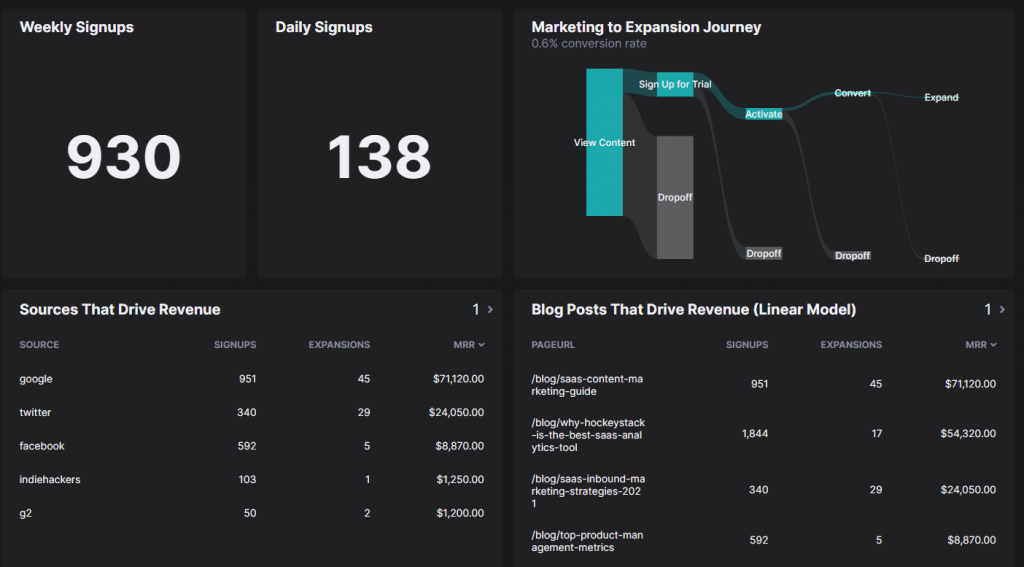Campaign Reporting: How to Measure the Success of a New Marketing Campaign
Marketing campaigns have a way of staying in mind long after an interaction or a purchase. Campaigns make companies memorable. They guide customers towards the desired action while giving brands a personality and identity.
But to know how your marketing is going, you will need a way to measure its success with the help of various metrics.
With the help of campaign reporting, you can better review the strategies, approaches, challenges, and overall performance of your campaign.

If you are interested in learning more about campaign reporting and about metrics to measure the success of your campaigns, keep reading.
What is a Campaign in Marketing?
In marketing, a campaign is a series of marketing tactics that are designed to achieve a goal. It is a carefully thought out and researched process that requires a great deal of planning and correct execution.
A marketing campaign includes but doesn’t solely consist of advertisements. While it can be conducted through channels like television, online advertisements, radio, and print, it also can include public relations, publicity stunts, paid traffic from search engines, etc.
Every marketing campaign has one or more goals that determine how the whole process plays out.
Some goals marketing campaigns can aim for are:
- Boosting revenue
- Increasing customer engagement,
- Promoting a new product/service
- Improving the image of your brand in general
What’s the Difference between Marketing Campaigns and Advertising Campaigns?
Marketing is a way for businesses to create a public image, raise awareness of their brand, and convince potential customers to make a purchase.
While in advertising, persuasive messages are created for different mediums and channels to reach the broad goals of a marketing campaign, the results of which can be measured using an ad tracker.
One can say that an advertising campaign is one aspect of a larger and broader marketing campaign.
Let’s say your business launched a campaign for the release of a new product/service.
The advertising campaign would only be one aspect of your marketing campaign. You can also leverage email blasts, social media, and paid search to reach your goal.
Now that you know the difference between advertising and marketing campaigns, I will list various metrics to measure the success of your campaign below.
Which Metrics Can Be Used to Measure the Success of a Campaign?
Measuring the success of your marketing campaign is important for you to keep track of your campaigns. Here are 5 metrics to measure the success of your marketing campaign.

1. Return on investment (ROI)
ROI is a commonly used metric that measures how much you spent on your marketing versus how much you earned back.
For example, you spent $1000 on an email marketing campaign, which returned to you as $2000 of revenue. Your ROI would be $1000 or 100%
The higher your ROI, the more successful your investment.
2. Customer lifetime value
This metric measures the lifetime value of a customer by calculating the average purchase a customer makes and multiplying it with how many times they buy each year and the number of years they remain as a customer.
Let’s say a customer spends $50 per purchase on average and buys 10 times a year with the expectancy of staying a customer for three years.
Their customer lifetime value would be $1500.
3. Bounce rate
Bounce rate calculates how many people leave your website after only viewing it. This can help you find out if people are leaving your pages because of:
- Loading errors or long loading times
- Lack of relevant content
- Disinterest
To keep track of your bounce rate, you can use a tool like Hockeystack. It enables you to easily view your bounce rate and when and where users left your website.
4. Conversion rate
The conversion rate or goal completion rate is the percentage of visitors to your website that complete a desired goal (conversion) out of the total number of your visitors.
A high conversion rate is certainly an indicator of a successful marketing campaign. It means that you managed to reach the people that want your product/service and successfully convinced them to be your customer.
5. Net promoter score (NPS)
The net promoter score is a survey-based metric where you ask people,
On a scale of 0 to 10, how likely are you to recommend our business to a friend or colleague?
Typically, anything from 0 to 6 is seen as detractors, 7 and 8 are neutral, and only 9 and 10 are considered promoters.
The formula to calculate your NPS is:
Total % of your promoters – total % of your detractors = your NPS
What is Campaign Reporting? Examples and Best Practices
Most businesses and brands focus on advertisement and marketing campaigns. And most are pretty good at that.
However, most businesses forget to document the campaign’s whole process, lessons, and future recommendations in an easy-to-view format.
This is essentially what campaign reporting helps you achieve.
What is Campaign Reporting?
Campaign reporting is taking all the information associated with a campaign and compiling it in one, easy-to-read format, ready to give to your client, shareholders, or your team to understand wins and opportunities.

To do this, you can use a tool like Hockeystack to see all of your data in one place and create every custom dashboard you can think of with any metrics you want in seconds with its easy-to-use user interface.
See all your data in an organized and easy to use interface. Create your campaign reports with ease with all your data right at your fingertips.
Why campaign reporting is important
Campaign reports are designed to give you an in-depth understanding of how your marketing campaigns are doing.
Basically, they help you discover and fix the areas in your marketing campaign that fall short and harm your efforts to gain new customers or to promote a new product/service.
Let’s say one of your campaigns did very well (assuming you used a metric like conversion rate to measure it) but the other one didn’t. You can now, after extensive campaign reporting, see the problems with the less successful campaign and revamp your strategies based on findings from the successful one.
It also helps you understand how well a specific marketing channel is working for you so that you can allocate your budget from less fruitful channels to working ones.
Campaign reporting may feel like just a formality at a first glance. But it has a lot of benefits for you and your future marketing campaigns. Once you start experiencing its benefits, you will see that it is essential to your campaigns.
Now you know about marketing campaigns and campaign reports.
So start your campaign reporting easily with the help of a tool like Hockeystack, accessing, viewing, and visualizing your data through dashboards, funnels, graphs, and lists to manage, analyze and create reports of your marketing campaigns, easier than ever before.
FAQs
Why is campaign reporting important?
Campaign reporting helps you discover and fix the weak points that keep your business from gaining new customers with your marketing campaign.
What should a campaign report include?
It should include information on:
- Marketing strategy
- Market research
- Promotions
- Ad and email campaigns
- Goals
- Expected outcomes



